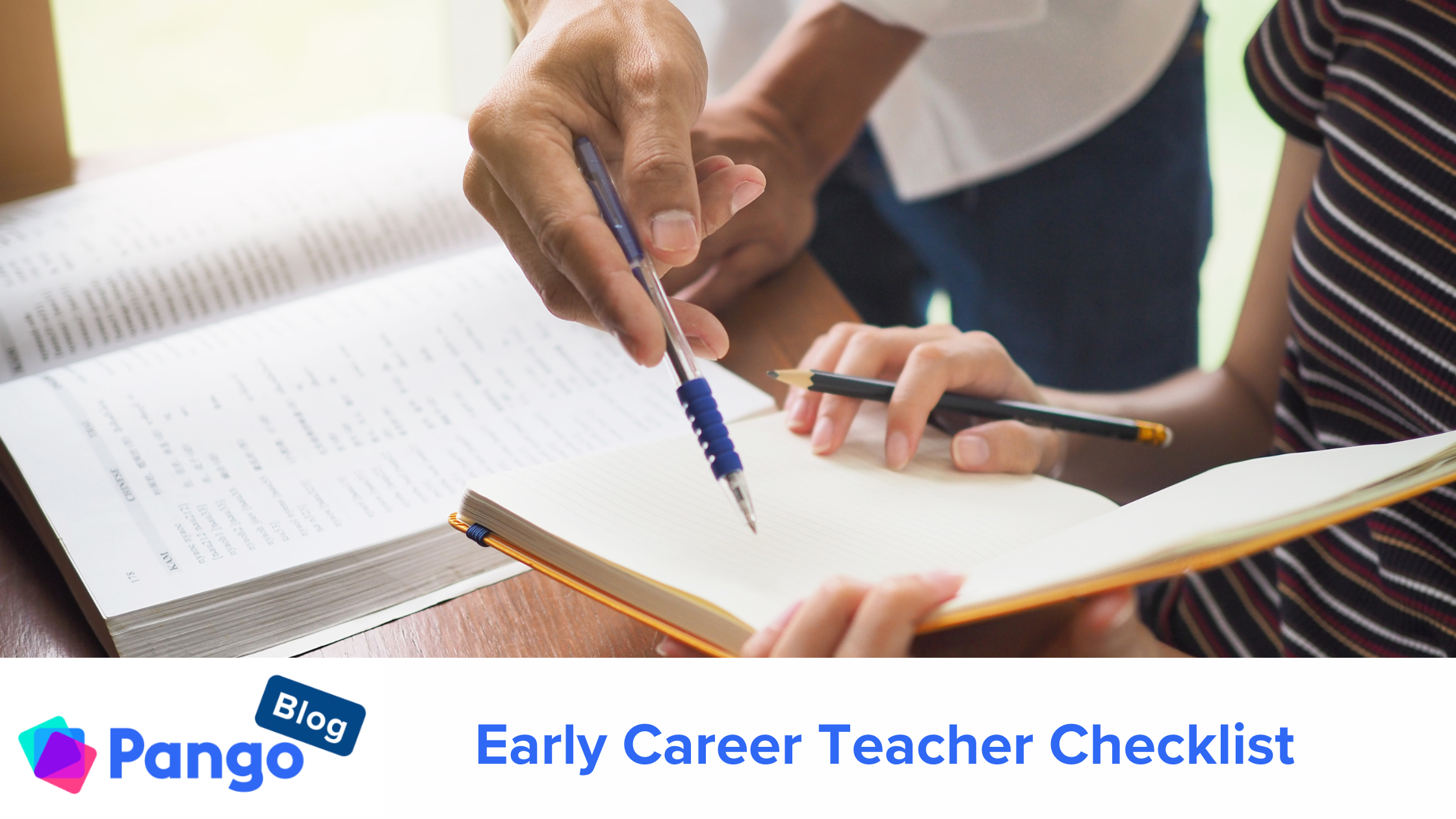Early Career Teacher Checklist

As an early career teacher (ECT), the beginning of the school year is a crucial time to set the foundation for a successful and organised classroom. To help you get started, we’ve compiled a comprehensive checklist focusing on classroom resources and preparation. This blog will walk you through everything from setting up your classroom to planning lessons and preparing for those all-important first weeks of school.
Table of Contents:
- Classroom Setup
- Resources and Planning
- Admin Tasks
Classroom Setup
Seating plan and desk arrangement
Creating a flexible seating plan is essential to accommodate students' needs and the dynamic nature of classroom activities. Consider the following:
- Design a flexible seating plan: Adapt your seating arrangement to suit different teaching activities, group work and individual learning needs.
- Ensure clear walkways: Make sure all students have a clear line of sight to the board and easy access to materials.
- Visibility and accessibility: Arrange desks so that all students can see the board and teacher easily, and ensure the room layout is conducive to movement and interaction.
Displays and Boards
Your classroom displays are not just for decoration; they’re powerful tools to enhance learning and classroom management.
- Welcome display: Create an inviting and inclusive welcome display that sets a positive tone for the school year. Could you use or include some of the items you made together during transition day?
- Subject-specific boards: Organise boards dedicated to key subjects like Maths and English. Include essential vocabulary, learning objectives and visual aids to support students’ learning.
- Behaviour and rewards chart: Incorporate a behaviour chart to reinforce classroom rules and expectations, helping to maintain a positive learning environment.
Labels and Organisation
A well-organised classroom promotes independence and efficiency. Start by labelling everything:
- Label trays, drawers and resources: Clearly label where stationery like pencils, books and hands-on resources are stored to ensure easy access for students.
- Student drawers or lockers: Label student storage spaces to help them keep track of their belongings.
- Categorise bookshelves: Organise books by categories (fiction, non-fiction, topic books) to make them easily accessible and encourage reading.
Classroom Rules and Routines
Setting clear expectations is key to a smooth-running classroom:
- Display classroom rules: Prominently share classroom rules, daily schedules and routines to provide a consistent structure.
- Prepare visual aids for routines: Use a visual timetable to guide students through morning routines, lining up procedures and end-of-day activities.
Technology and Resources
Technology can be a great asset if it’s ready to go from day one:
- Test and set up tech equipment: Ensure interactive whiteboards, projectors and other tech tools are working properly.
- Backup supplies: Have spare batteries, cables and other accessories on hand to avoid disruptions.
- Educational apps and platforms: Check that all digital resources and educational apps are set up and ready for student use.
Resources and Planning
Resource Cupboard
A well-stocked and organised classroom is a productive classroom:
- Stock up on supplies: Ensure you have plenty of pens, pencils, paper and other stationery supplies readily available for both you and the students.
- Organise learning tools: Arrange whiteboards, pencil pots and other resources so they’re ready for use.
- Prepare support materials: Photocopy and organise all lesson support materials needed for the first week to streamline your workflow.
Lesson Planning
Effective lesson planning is the backbone of a successful school year:
- Organise weekly and daily plans: Prepare your lesson plans in advance, ensuring they align with term goals.
- Differentiate instruction: Include strategies for differentiation or adaptations to plans to meet the diverse learning needs of your students.
- Plan initial assessments: Prepare baseline assessments to gauge student abilities and inform your teaching strategies.
Curriculum and Timetabling
Your curriculum and timetable are the framework for your teaching:
- Review the curriculum: Familiarise yourself with the school’s curriculum and schemes of work.
- Finalise your timetable: Plan your schedule, including time for subjects, assemblies and special events.
- Collaborate with colleagues: Co-ordinate with co-teachers and specialists to ensure a cohesive approach to teaching.
Admin Tasks
Class Lists and Student Information
Understanding your students is crucial for effective teaching:
- Familiarise yourself with the class list: Get to know your students, especially those with Special Educational Needs (SEN) or English as an Additional Language (EAL).
- Organise student records: Set up folders or digital records for tracking student data, attendance and progress.
Health and Safety
Safety is a top priority:
- Perform a safety check: Inspect your classroom for potential hazards like loose wires or sharp objects.
- Stock first-aid supplies: Ensure your first-aid kit is complete and accessible.
- Review evacuation procedures: Make sure you’re familiar with the school’s emergency protocols and evacuation routes.
Communication with Parents
Building strong relationships with parents is key to student success:
- Draft a welcome letter: Introduce yourself to parents, outline your expectations and open lines of communication.
- Prepare communication templates: Have templates ready for sending behaviour or progress notes to parents.
Prepare for a New School Year with Pango
Made by teachers, for teachers, Pango understands the need for making lesson planning easy. Lighten the load with our library of resources that spans the whole national primary curriculum. From history resources, to geography activities and PSHE worksheets, our high-quality teaching materials are just a click away. Why not try our premium resources? Sign-up today and receive a free 7-day trial.

.jpg)
.jpg)